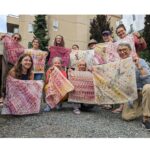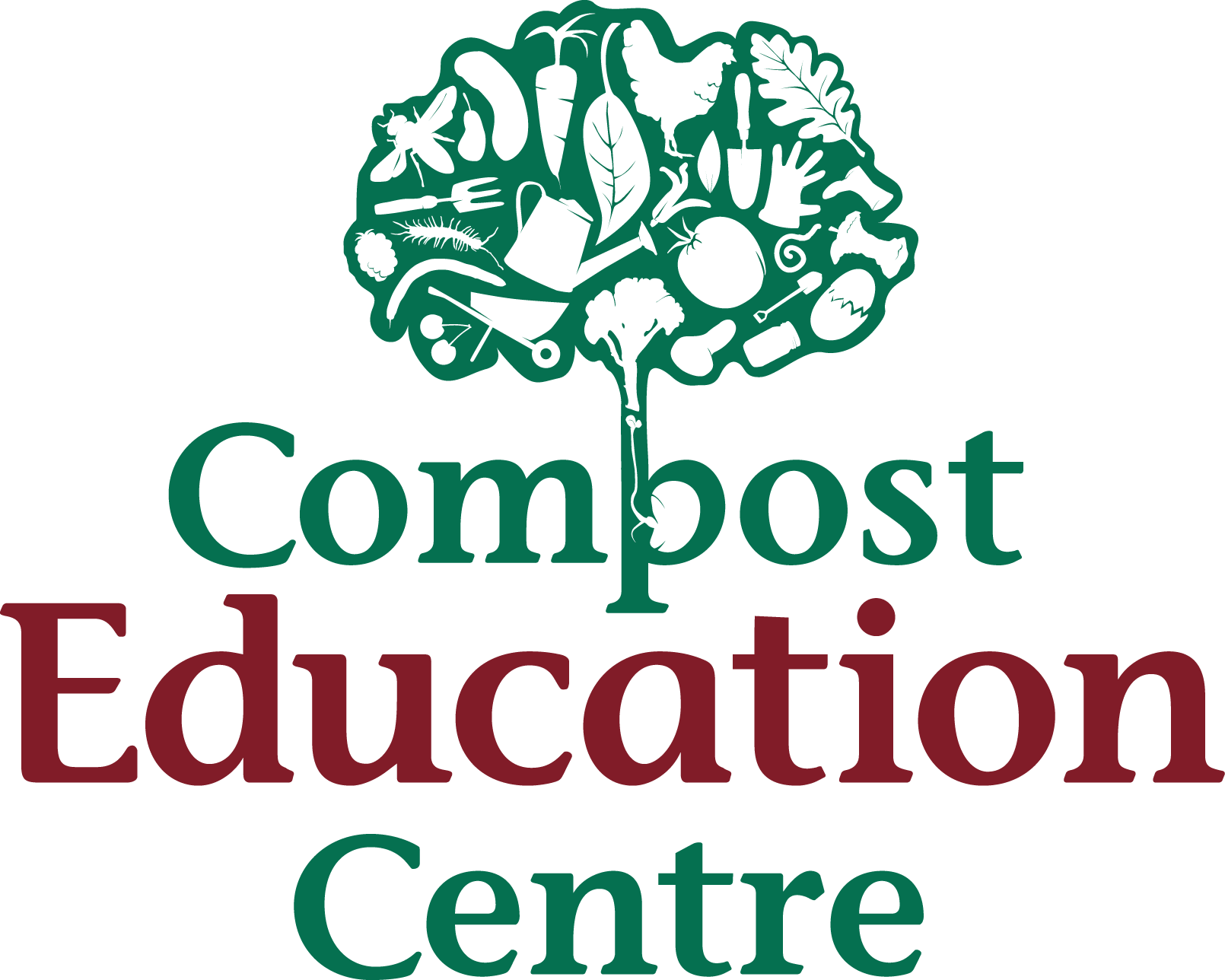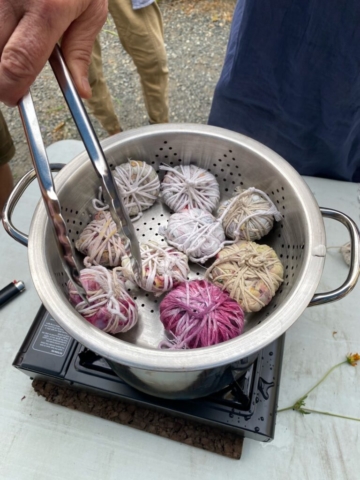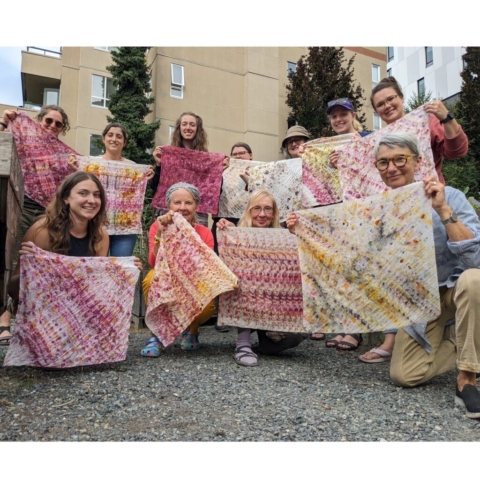Soaking Up Natural Dyes
January 4, 2024

In September, I attended a natural dyeing at the Yates Street Community Garden led by Angie Choly.
I attended the workshop in hopes of learning some strategies for dyeing with natural material to bring to the high school gardens I teach in. The method we used was called bundle dyeing, and it was fun, effective, and quite simple!
The part of natural dyeing that always intimidates me is the mordanting process, which is essentially a way to pre-treat your fabric to make it more receptive to the dye and improve the stability of the colour in the finished product. Angie mordanted the fabrics for us using potassium aluminium sulfate, rinsed them and cured them in the fridge and brought them to us ready to go. I’ll have to get some practice mordanting on my own soon!
After learning a little bit about other natural dyeing strategies, we got into our bundle dyeing process to create bandanas. We had all sorts of natural materials to choose from for our dyes. We used flowers including mallow, scabiosa, hollyhock, pansies, cosmos, zinnia, and more. We also used kitchen scraps including onion skins, turmeric, hibiscus coffee, cabbage, and berries.
I ended up using a lot of flowers, but I was really excited about the potential of dyeing using food scraps with high school students as it ties into our chats about compost and redefining what we consider waste so perfectly. And as a bonus? Food waste is a material that is so easy to access.
The bundle dyeing process itself is simple. It involves laying down all your materials on the bandana, and then rolling it up tightly in the way you’d roll a rug. If you fold it in half first, either rectangular or corner to corner you get a sort of mirror effect in the way the colour comes out (which is cool!). After that, you roll up your fabric into a spiral and tied tightly. The last step is steaming the piece the same way you’d steam a vegetable in the kitchen. We steamed our bandanas for about 30 minutes – you can see the results in the photos!
Interested in chatting with Elora about running a workshop with a group of students? Check out our offerings here.
This was such a fun way to engage with plants (that you can find in gardens, along boulevards, in sidewalk cracks, and other urban areas) as well as food scraps in a new way.
It can be difficult to find the time to pursue professional development and skill-building while also working as an educator with a busy teaching schedule. I was grateful to the Compost Ed Centre for making it possible, and I’m looking forward to integrating what I’ve learned into my teaching.
Thank you to the Yates Street Community Garden and Angie for hosting!
Support us by becoming a monthly donor today!
By Elora Adamson, Child & Youth Education Coordinator
Posted in Uncategorized




